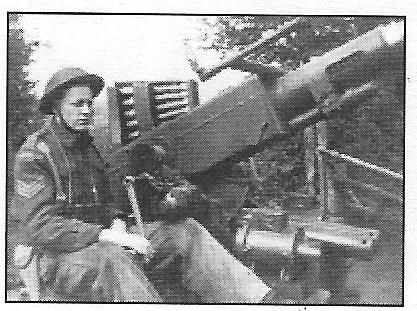The battle to liberate Italy during the Second World War was nearing its end in early 1945, but that didn’t mean the fighting was any less ferocious, as Capt. William James Hume discovered.
Canada’s longest army campaign during the war was in Italy. Canadian forces served in the heat, snow and mud of the grinding, nearly two-year — 1943 to 1945 — Allied battle across Sicily and up the Italian peninsula. Attempting to pry the country from Germany’s grip cost 26,200 Canadian casualties — including 5,300 killed.
The Allies fought an attritional campaign against a stubborn and skilful enemy. Far from being the “soft underbelly of Europe,” as British prime minister Winston Churchill suggested, Italy became one of the war’s most exhausting campaigns.
Hume, 26, was born in Moose Jaw to Charles and Elizabeth Hume on Jan. 1, 1919. He moved to Ontario for college, and on June 17, 1941, after completing his third year of science at Queen’s University, he enlisted at Gananoque, Ont.
After a year of training, he and his regiment — the 2nd Field Regiment, Royal Canadian Artillery, 1st Canadian Infantry Division — were shipped overseas to Italy in March 1942.
It was during a battle near the town of Ravenna on Jan. 16, 1945, when he was killed in action — only two weeks before the 1 Canadian Corps began withdrawing from the country to rejoin the First Canadian Army in Northwest Europe.
Hume had four brothers who also fought during the Second World War and survived.
Capt. Herbert Douglas Hume also served in Italy with the Royal Canadian Artillery and received accolades for his efforts by being mentioned in dispatches.
Gordon Hume served with the Royal Canadian Air Force as a corporal and received an honourable discharge. He returned home and began taking mechanical engineering at the University of Saskatchewan.
Lance-Cpl. Russell Howard Hume was training at Shilo, Man., with the infantry when his brother died, while Clifford Hume had just enlisted with the army in Regina.
The military buried Capt. William James Hume in the Argentia Gap War Cemetery, roughly 105 kilometres south of Venice.
Capturing vital ports
The Battle of Normandy ended in late August 1944, but the war continued for almost another year.
The next big objective for the Allies was the capture of Antwerp, the largest port in Europe. The Belgian city was essential for Allied supplies so the push into Germany could continue.
Before securing Antwerp, the Canadians first had to capture Le Havre, Dieppe, Boulogne, Calais, and Dunkirk, which contained small ports essential to supply the advance. The Germans defended all the towns in recognition of their strategic importance to the Allied invasion.
Le Havre fell first in early September, followed by Dieppe. However, Boulogne and Calais were more difficult victories.
Moose Jaw resident Sgt. George William Easton — born on Aug. 16, 1921, to Fred and Elezabeth Easton of The Pas, Man. — was a part of the battle of Calais and fought with the 8 Light Anti-Aircraft Regiment, Royal Canadian Artillery.
He was injured sometime in early September and died of his wounds on Sept. 7, 1944, at age 22. Three weeks later, on Sept. 30, 1944, the Battle for Calais concluded.
The military — which buried the soldier in Calais Canadian War Cemetery — sent his aunt Dorothy Easton of 369 Main Street North a letter informing her of her nephew’s death and promised to forward any additional information.
“The Minister of National Defence and the Members of the Army Council have asked me to express to you and your family their sincere sympathy in your bereavement,” the letter added. “We pay tribute to the sacrifice he so bravely made.”
The City of Moose Jaw also honoured Easton, granting him a posthumous memorial certificate on Aug. 14, 1945, for giving his life “while upholding the cause of Democracy, Freedom and Justice.”
“This memorial is inscribed by the people of Moose Jaw, Saskatchewan, with heartfelt gratitude and in profound sorrow, through its duly elected council,” Mayor J. Fraser McClellan added.
In response to some providers blocking access to Canadian news on their platforms, our website, MooseJawToday.com will continue to be your source for hyper-local Moose Jaw news. Bookmark MooseJawToday.com and sign up for our free online newsletter to read the latest local developments.




